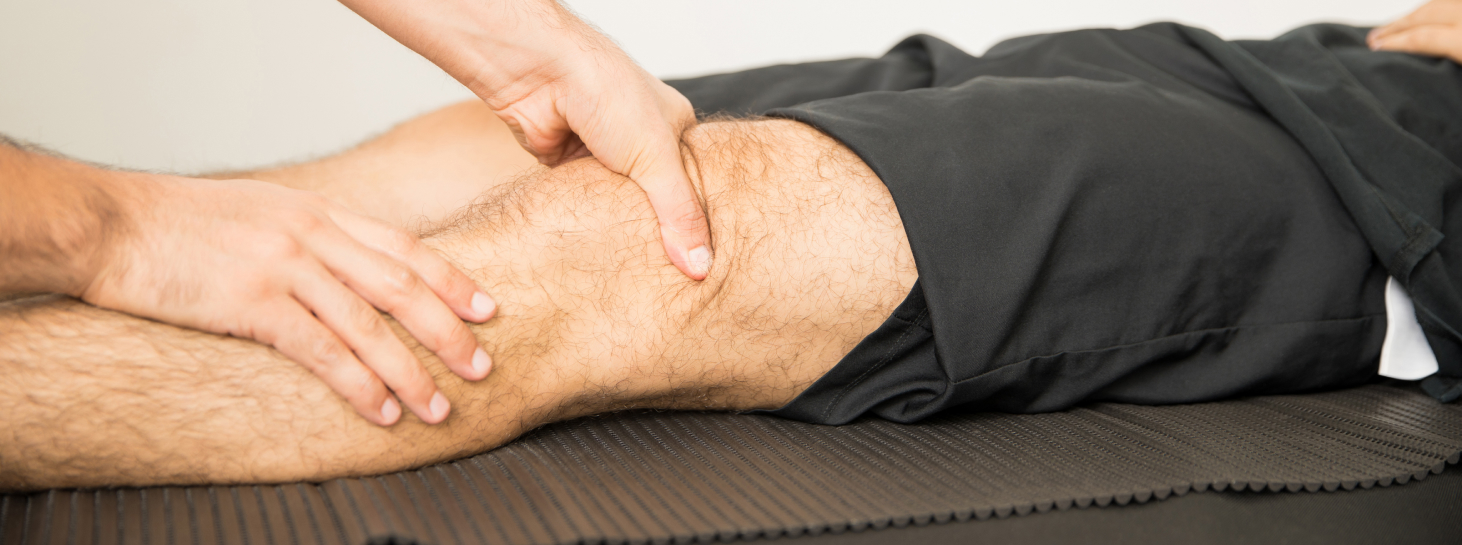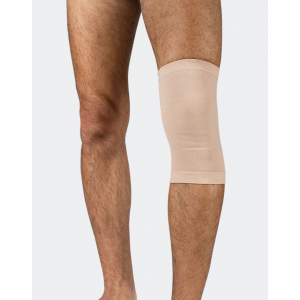Do I need to wear a knee brace?


They are a key garment for preventing and recovering from certain injuries. We tell you everything you need to know about them.
Before knowing if a knee brace will help you with your injury, it is essential that you understand the root of the problem you have. See your doctor for tests and a treatment recommendation. If you already know, this post may be useful. From Antipress we bring you a summary of the most typical knee injuries and we advise you if knee braces can be a good ally to recover and feel less pain.
Anatomy of the knee
The knee is the largest joint in the body and is formed by the junction of the femur, tibia and patella bones. It is also made up of cartilage, muscles, ligaments and tendons:
- Joint capsule: This is a fibrous layer that serves to firm and stiffens the area. It protects the inner soft tissues.
- Synovial membrane: This is a layer that covers the joint capsule and lubricates the joint, thanks to the synovial fluid it produces.
- Bursa: These are small sacs that cushion the bones and prevent friction when we move.
- Meniscus: These are the fibrocartilaginous structures that stabilise the joint. They also cushion shocks and allow the load to be better distributed.
- Ligaments: The lateral ligaments give stability to the sides of the knee, while the cruciate ligaments give stability anteriorly and posteriorly to the tibia in relation to the femur.
- Muscles: The quadriceps perform knee extension. The hamstrings, on the other hand, perform the flexion movement.
What knee problems are there?
The knee is one of the most injured areas of the body. Sudden problems due to sport, ageing, and overuse of the joint are the majority of the causes why we humans often suffer from knee pain.
Let's first review those injuries that happen suddenly:
- Knee sprain: This occurs when the ligaments that attach the femur to the tibia are torn. A person with a sprained knee usually sees swelling in the area and has pain when trying to bend the joint.
- Meniscus tear: The meniscus can tear if we make sudden movements by twisting the knee. It is an injury that results in a stiff and painful sensation.
- Torn ligaments: One of the most common injuries when playing sports that require sudden stops and changes of direction, such as football or basketball.
- Fracture of the kneecap: Usually due to falling. It causes difficulty extending the knee and keeping the leg flat on the ground.
In terms of injuries due to overuse or ageing, we can talk about:
- Bursitis: Caused by inflammation of one of the small bursae. It can restrict mobility and cause pain both at rest and when walking.
- Tendonitis: Affects the tendon that joins the patella to the tibia. Patellar tendonitis is common in people who play sports with frequent jumping, such as volleyball or basketball.
- Osteoarthritis: This is the wearing away of cartilage, which causes inflammation and pain when moving the joint.
- Osteoporosis: Unlike osteoarthritis, the problem lies in the loss of bone density. The bone becomes weaker and the risk of fracture increases.
When is it advisable to wear a knee brace?
The knee brace is a therapeutic garment whose goal is to facilitate the movement of the knee joint in times of stress, both in the context of recovery from an injury and in the prevention phase. The product fits and compresses the knee, allowing you to perform less painful movements and giving firmness to the joint. It is an ideal solution for everyday use if your doctor has advised you to use it. It will be a good ally for people with osteoarthritis, ligament instability, ligament sprains, bursitis or tendonitis.
However, you should be aware that with the knee brace on, your knee muscles work less and can become weaker. As a result of overuse, when you try to move without a knee brace, you will notice a lack of support. In fact, if you are an athlete, you will probably be advised not to wear them too much.
What types of knee braces are there?
There are four different types of knee brace depending on the solution they offer. Each of them has a specific shape and is made of different materials:
- Knee sleeves: These are made of elastic materials that compress the joint, providing warmth and a great feeling of support. They are basic wraps that can be used to relieve swelling and provide stability for recovery from injury. However, they are not the best option after surgery.
- Patellar straps: These bands are becoming popular for treating anterior knee pain. They are placed between the tibial crest and the patella to put pressure on the patellar tendon.
- Open knee brace: This type of knee brace is adjustable and is usually hinged. They are made with fabrics of varying elasticity and viscoelastic material to provide comfort to the user. They are the most useful for severe lateral and cruciate ligament injuries.
- Protective knee brace: This item does not help to give more stability to the joint, but it is the best alternative to reduce the risk of injury due to blows or falls, thanks to its inner padding. They are used by people who play sports such as volleyball or skating.
How are knee pads fitted?
Putting on knee pads correctly is very simple but crucial for them to do their job. When it is a sleeve, open it up like a sock and pull it up to the injured knee area. Make sure you cover the entire joint and that it fits without excessive compression. It is also not good if it is loose, so before making your purchase you will need to confirm that your knee circumference matches the range of the size you want to buy. If it is an open knee brace, it will be easier for you to adjust it until you find the ideal pressure point.
References
- https://www.msdmanuals.com/es-es/hogar/traumatismos-y-envenenamientos/esguinces-y-otras-lesiones-de-partes-blandas/esguinces-de-rodilla-y-lesiones-relacionadas#:~:text=Los%20esguinces%20de%20rodilla%20se,rodilla%2C%20tambi%C3%A9n%20se%20pueden%20lesionar
- https://www.innofisio.com/diferencias-entre-la-artrosis-y-la-osteoporisis-preguntas-frecuentes/
- https://www.cun.es/enfermedades-tratamientos/enfermedades/artrosis-rodilla
- https://www.ortopediaplaza.com/bueno-utilizar-rodilleras-hacer-ejercicio/



